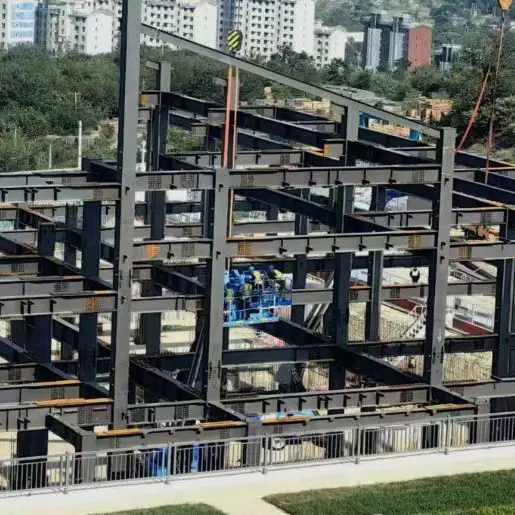Steel Structure Engineering: The Backbone of Modern Construction
2025-04-01
In the world of modern construction, steel structure engineering stands out as one of the most crucial and versatile disciplines. From towering skyscrapers to expansive bridges, warehouses, and industrial facilities, steel structures are an essential component of our built environment. Steel, with its strength, durability, and flexibility, has become the material of choice for architects, engineers, and builders around the globe. In this blog, we will explore the importance of steel structure engineering, its key benefits, and the role it plays in shaping the future of construction.
What is Steel Structure Engineering?
Steel structure engineering involves the design, fabrication, and erection of structures made primarily from steel components. These structures are composed of steel beams, columns, braces, and other elements that work together to provide strength, stability, and durability. Steel is widely used in construction because it offers an excellent combination of high strength-to-weight ratio, resistance to external forces, and flexibility in design.
Steel structure engineering is not just about using steel as a material but also about applying engineering principles to ensure that these structures can withstand the forces they will encounter, such as wind, earthquakes, and loads. The work of a steel structural engineer involves analyzing the required load-bearing capacity of the structure, determining the appropriate materials, and ensuring that the design meets safety standards and regulatory requirements.
Key Benefits of Steel Structures
Steel structures offer numerous advantages that make them ideal for a wide range of construction projects. Here are some of the key benefits of steel structure engineering:
1. Strength and Durability
Steel is one of the strongest building materials available, capable of withstanding significant loads and stresses. Unlike other materials such as wood or concrete, steel does not weaken over time. It can resist corrosion, fire, and extreme weather conditions, making it a highly durable choice for buildings and infrastructure. Whether it’s a high-rise office building, a bridge, or an industrial warehouse, steel structures are designed to last for decades.
2. Flexibility in Design
One of the standout features of steel structures is their flexibility in design. Steel’s ability to be molded into various shapes and sizes allows for creative and innovative architectural designs. Steel beams and columns can span large distances without the need for intermediate support, making it possible to create wide-open spaces with minimal internal columns. This flexibility is particularly valuable in commercial and residential buildings, where open floor plans are often desired.
3. Speed of Construction
Steel structures are often prefabricated off-site in controlled factory environments, which reduces the amount of on-site construction time. These pre-engineered steel components are then delivered to the construction site and assembled quickly, leading to faster project completion. The speed of construction with steel results in cost savings and a more efficient use of resources, which is especially important in large-scale projects where time is a critical factor.
4. Sustainability
Steel is one of the most sustainable construction materials available. It is fully recyclable, and recycled steel can be used to create new structures without compromising quality. The process of recycling steel also uses less energy than producing new steel from raw materials, further reducing its environmental impact. In addition, steel structures can be designed to be energy-efficient, contributing to the overall sustainability of the building.
5. Resistance to Natural Disasters
Steel structures are known for their ability to withstand extreme conditions, such as high winds, earthquakes, and other natural disasters. This is one of the reasons why steel is commonly used in areas prone to earthquakes or hurricanes. Steel’s flexibility allows it to bend and absorb energy without breaking, offering greater protection for buildings and occupants during seismic events or storms.
Applications of Steel Structures
Steel structure engineering plays a crucial role in a wide variety of construction projects. Some of the most common applications include:
1. High-rise Buildings and Skyscrapers
Steel is the material of choice for high-rise buildings and skyscrapers due to its strength and ability to support massive loads while maintaining structural integrity. The flexibility of steel allows for taller and more innovative designs, such as the iconic Burj Khalifa in Dubai, which stands as a testament to the power of steel in modern construction.
2. Industrial Buildings and Warehouses
Steel is often used in the construction of large industrial buildings, warehouses, and factories due to its ability to span large areas without the need for internal support columns. These open spaces are essential for manufacturing processes, storage, and distribution operations. The ability to quickly construct such buildings also contributes to the success of steel in industrial applications.
3. Bridges
Steel has long been a favored material for bridges, especially for large and long-span structures. Steel bridges can withstand the immense weight and stresses exerted by traffic, while their flexibility ensures they remain stable during wind or seismic events. Examples of steel bridges include the Golden Gate Bridge in San Francisco and the Sydney Harbour Bridge in Australia.
4. Stadiums and Sports Facilities
Large sports stadiums and arenas are often constructed using steel structures because of the need for expansive roof spans, large seating areas, and the ability to handle the high loads associated with large crowds. Steel’s versatility allows architects to create stunning and functional designs for modern sports venues.
5. Airports and Transportation Hubs
Airports and transportation hubs require large, open spaces and durable structures to support heavy traffic and passenger flow. Steel is the ideal material for these types of buildings, providing the necessary strength and stability while allowing for efficient construction timelines.
The Future of Steel Structure Engineering
As the demand for taller buildings, larger infrastructure, and more sustainable construction methods grows, the future of steel structure engineering looks bright. New innovations in steel production, fabrication techniques, and design methods are continually improving the efficiency, sustainability, and cost-effectiveness of steel structures.
Advancements in 3D modeling and building information modeling (BIM) are also changing the way engineers design and plan steel structures, enabling more accurate and efficient project execution. Additionally, the rise of green building standards and environmental regulations is driving the increased use of steel’s recyclable and sustainable properties.
Conclusion
Steel structure engineering is a cornerstone of modern construction, offering strength, durability, and design flexibility that other materials cannot match. Whether it’s for a high-rise building, a bridge, or an industrial facility, steel structures provide the necessary foundation for some of the most iconic and functional structures in the world. As technology continues to evolve, steel will remain at the forefront of the construction industry, offering solutions to meet the challenges of a growing and dynamic world.



